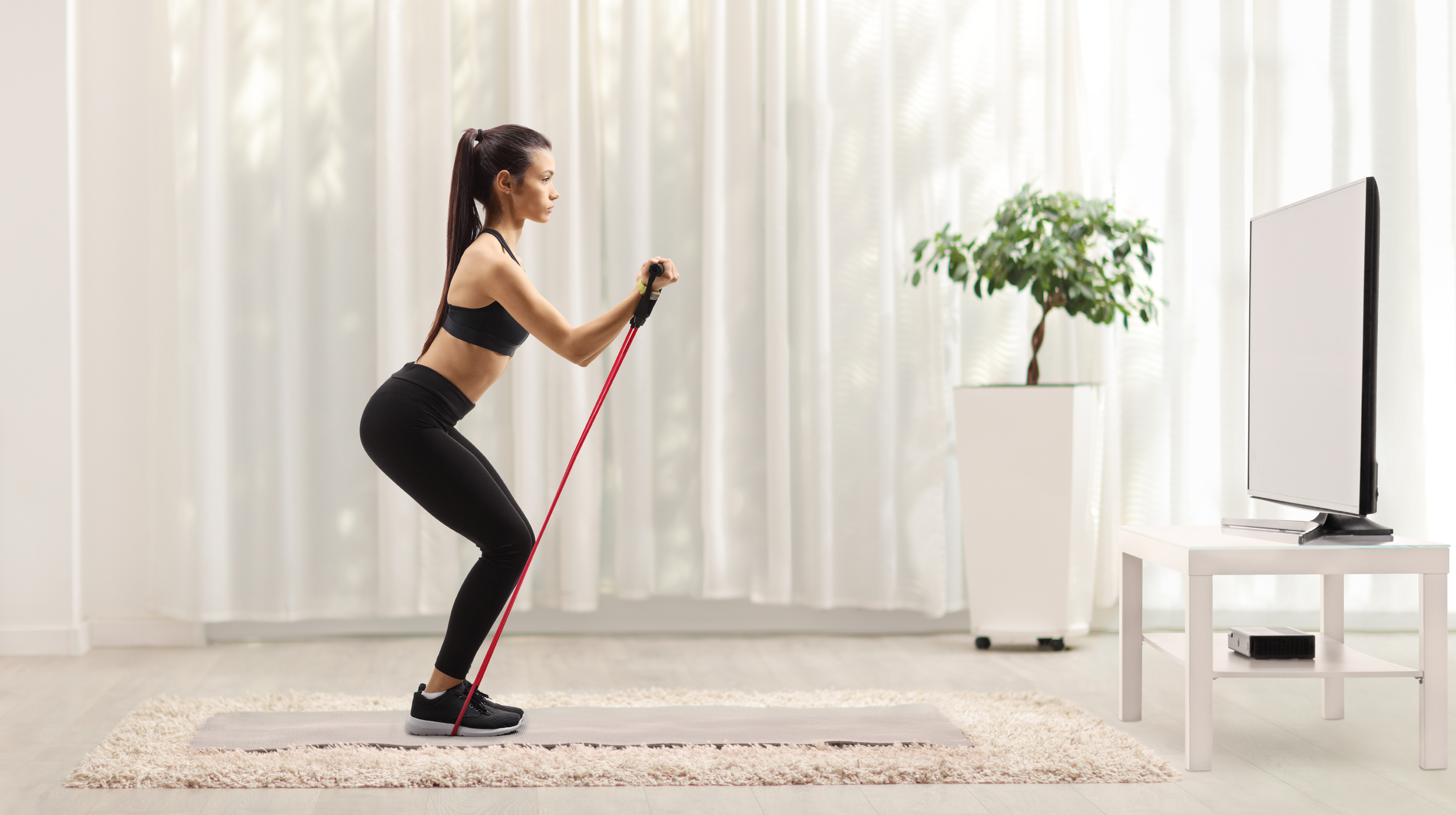Is it Hard to Resistance Train at Home?
May 3, 2021 mindpumpIt is by no means hard to train at home, it just takes some planning. In fact, if there was one good thing to come out of being quarantined at home, it’s that it taught us we can still get a great workout (and might even prefer) staying at home.
Don’t feel like, just because you don’t have access to a gym with the wall to wall assortment of equipment that you can’t get the proper stimulus. All you need is some resistance bands and maybe a suspension trainer. Bonus points if you are able to get your hands on some weights.
Most at home programs are designed poorly. They don’t allow progression or variety, giving the individual a way to see better results over time. It’s easy to go to the gym and pick different machines that tell you what muscle they target and keep adding weight. One thing to be wary of though, is not progressing by just turning it into cardio or plyometric exercises. A lot of individuals will make an exercise “harder” by turning it into a jump or explosive movement. Most of the population not only doesn’t need that skill set, but it can increase the risk of injury.
Variations To Make It Harder
If those are still too easy, use these tools to make it more challenging.
Isometrics – Try holding the contraction for 2-3 seconds where the muscle is full engaged before repeating your next rep
Eccentrics – Slow down your lowering pace. So for push ups, take 3-4 seconds to come back down to the floor before doing the next rep.
Bands/Suspension Trainers – You can get resistance bands or a suspension trainer for relatively cheap these days. I like to bring them with me if I want to add further challenge to the exercises listed above. Not to mention a suspension trainer allows you a lot more options for all muscles.
Sample Routine
Do each exercise for 10-30 repetitions. Here are progressions if the exercise is too easy:
Bodyweight squats -> Single Leg Squats
Push-ups -> One arm Push-up or decline pushups
Band Rows -> Inverted bodyweight rows on suspension trainer -> Pull-ups
Banded deadlift -> Single Leg Romanian Deadlift
Band Chops -> Chop Rotations on suspension trainer
To add/substitute For HIIT circuits (more on this later):
Tuck Jumps
Jumping Lunges
Mountain Climbers
Burpees
Skater Jump
If you want additional, in full depth help, then I would recommend checking out our MAPS Anywhere Program for more progressions and complete guidelines towards a full and effective at home program.
Reps – Since we can’t increase in weights, our only other option is to increase in reps. The research shows not only muscle maintenance, but even growth CAN still occur if you are putting a muscle through fatigue anywhere from 6-30 reps. Just keep in mind, the higher you go in reps, the closer to failure you have to go, since you aren’t getting as much tension built early on to fatigue the muscle. So if you are doing push-ups and hit 15 in the first week of quarantine, try to hit 16 or more in the second. And keep focusing on progressing that each week. You should be able to progress week to week unless the exercise was too difficult to begin with or form was sloppy.
If your goal is to just be healthy and fit, you can very easily achieve that within the comfort of your own home, and with minimal equipment. If your goal is to absolutely maximize your bodybuilding potential, then at some point you will probably need to get back to a gym, or build yourself a more legit setup at home.
Get Rid of the Distractions
For what it’s worth, I have a couple bands, and invested in adjustable dumbbells that went up to 90lbs each, and not only did it exceed my expectations this past year, I for SURE got muscle growth. I have to admit, if I had to attribute it to one thing it would have to be the lack of distraction, and limitation on weight. Because I had no one to “show off” in front of, or rush my sets, and because I knew I could only go so heavy on the weight ultimately, I maximized EVERY SINGLE REP.
I’m talking full on concentration squeezing at the peak contraction, and controlling and owning every rep as I lowered it. Growing a muscle is ultimately about creating a strong enough mind muscle connection to take that muscle through constant tension under increased load. By having no distractions, I was able to build a connection for every exercise and every body part that allowed me to properly exhaust the target muscle to get it to grow. This is something I will definitely take with me going back to the gym.







